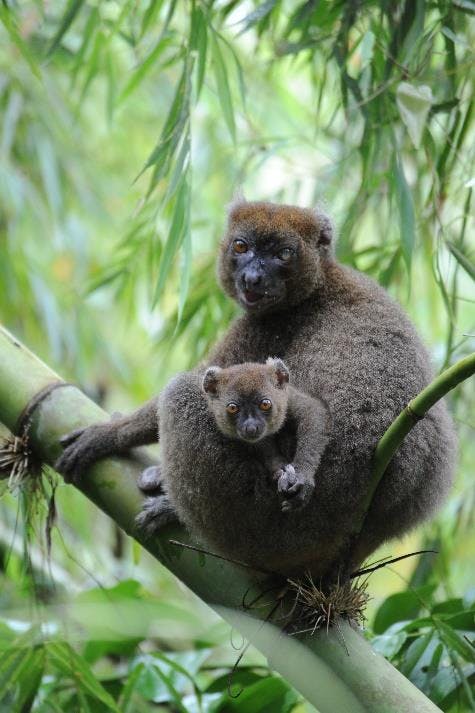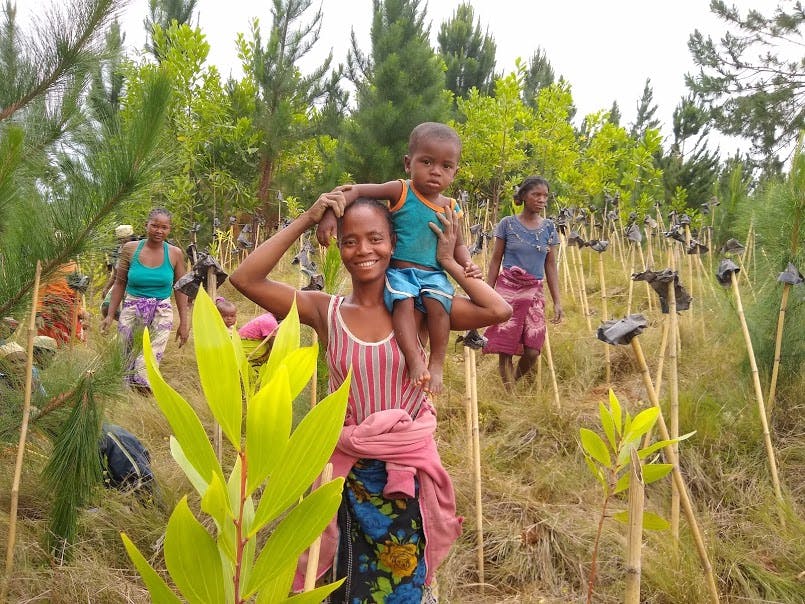kianjavato
One Year--One Million Trees for Madagascar
The lowland evergreen rainforests of Kianjavato Classified Forest in southeast Madagascar are home to nine species of lemur, including 30% of the remaining population of the Critically Endangered Greater Bamboo Lemur and Critically Endangered Black-and-white Ruffed Lemur. It is also the only home of the Endangered Jolly’s Mouse Lemur and contains multiple Key Biodiversity Areas--sites of global importance to the planet’s overall health and the persistence of biodiversity. Kianjavato is within the Madagascar Biodiversity Hotspot and a government protected area.

Since 2010, Re:wild partner Madagascar Biodiversity Partnership (MBP) has worked on a novel reforestation program that engages area residents as active stakeholders and secures land donations from local farmers. Long-term lemur monitoring programs have been established for Aye-ayes, Black-and-white Ruffed Lemurs, and Greater Bamboo Lemurs, providing jobs to the local community and supporting ecotourism in Kianjavato. This is one of the few places tourists can reliably see the elusive and distinctive Endangered Aye-aye.
Revenue that is generated through ecotourism operations is distributed to the community and used to improve local infrastructure. Having experienced the benefits of maintaining a healthy forest and thriving wildlife populations, the local community has a keen interest in protecting the rare lemurs with whom they share this vital landscape. These communities work alongside MBP to rebuild forest habitat from the ground up after years of exploitation and degradation.

The reforestation program has continued to grow over the past decade and now includes 20 satellite tree nurseries and has planted nearly 4 million native trees, rewilding the degraded forests and providing critical corridors to wildlife. Re:wild is supporting MBP’s current efforts to expand the program by planting 1 million trees in a single year alone, and increasing community participation, ownership and local economic gains.


